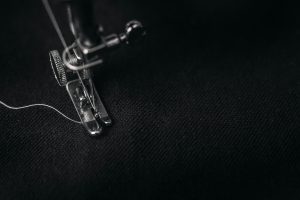The Rise of Fashion PsyOps: How Ads Manipulate Desire
Welcome to the world of fashion, where trends constantly come and go, and our desire to keep up and fit in is never-ending. But what if I told you that behind every fashion advertisement, there is a hidden agenda that manipulates our desires and influences our buying behavior? This phenomenon is known as Fashion PsyOps, the strategic use of psychological tactics in advertising to control our thoughts and emotions towards fashion. In this article, we will explore the rise of Fashion PsyOps and how it has become a powerful tool for fashion brands to create a false sense of need in us.
The History of Fashion PsyOps
The term PsyOps, short for Psychological Operations, originated in the military and is often used in propaganda and warfare to influence the beliefs and behaviors of a target audience. In the 1920s, Edward Bernays, the “father of public relations,” applied these principles to advertising and changed the way marketers sell products. Bernays understood the power of appealing to people’s emotions rather than relying on rational reasons to buy a product. He believed that by tapping into our subconscious desires, he could manipulate us into purchasing goods and services.
Fast forward to the 1950s, fashion advertisers began using similar tactics to sell their products. They understood that fashion is not strictly about clothing; it is about aspiration and identity. Advertisers started using images of beautiful, highly coveted models to create an idealized version of beauty and success that people would strive for. This approach was highly effective as it played on our emotional and psychological vulnerabilities, leading to the birth of Fashion PsyOps.
The Tactics of Fashion PsyOps
Fear of Missing Out (FOMO)
Fashion advertisers often create a sense of urgency with FOMO tactics, making people feel like they need to act fast before the opportunity slips away. This strategy works particularly well with limited edition products or one-day sales. Posting countdowns, using phrases like “limited stock available,” or “only available for a limited time” all trigger our fear of missing out and compel us to make a purchase.
Emotional Branding
Emotions play a significant role in our buying decisions, and fashion advertisers know this all too well. They create a strong emotional connection between their brand and their target audience, associating their products with feelings of happiness, success, and confidence. By evoking these desirable emotions, they create a positive attitude towards their brand, making people more likely to purchase their products.
Social Media Influencers
In today’s digital age, social media influencers have taken over traditional advertising methods. Fashion brands collaborate with influencers who have a considerable following to showcase their products and influence their followers’ opinions. This tactic is highly effective as it taps into the influencer’s credibility and allows the brand to reach a larger audience. As a result, we often see people buying products solely because their favorite influencer is promoting it, and they want to be associated with them.
The Impact of Fashion PsyOps
There’s no denying that fashion advertising and marketing techniques have a significant impact on our buying behavior. As consumers, we are constantly bombarded with images of perfect bodies, flawless skin, and luxurious lifestyles, making us feel the need to conform to these standards. Fashion PsyOps has created a culture of constant consumption, where we feel the pressure to buy the latest trends, even if we don’t need them.
Moreover, the rise of fast fashion, where new collections are introduced every few weeks, has only amplified the impact of Fashion PsyOps. Brands create a sense of urgency, encouraging consumers to buy more and buy often, leading to overconsumption and the disposal of perfectly wearable clothing, ultimately contributing to the environmental crisis.
In Conclusion
The rise of Fashion PsyOps has revolutionized the fashion industry, but at what cost? It has undoubtedly changed the way we consume fashion, making it more about the need to fit in and keep up rather than a personal expression of style. As consumers, we must be aware of these tactics and not let them manipulate our desires and emotions. We should learn to make more mindful and conscious buying decisions and not let fashion advertisers control our thoughts and actions. Remember, fashion should be about self-expression and not conformity.











